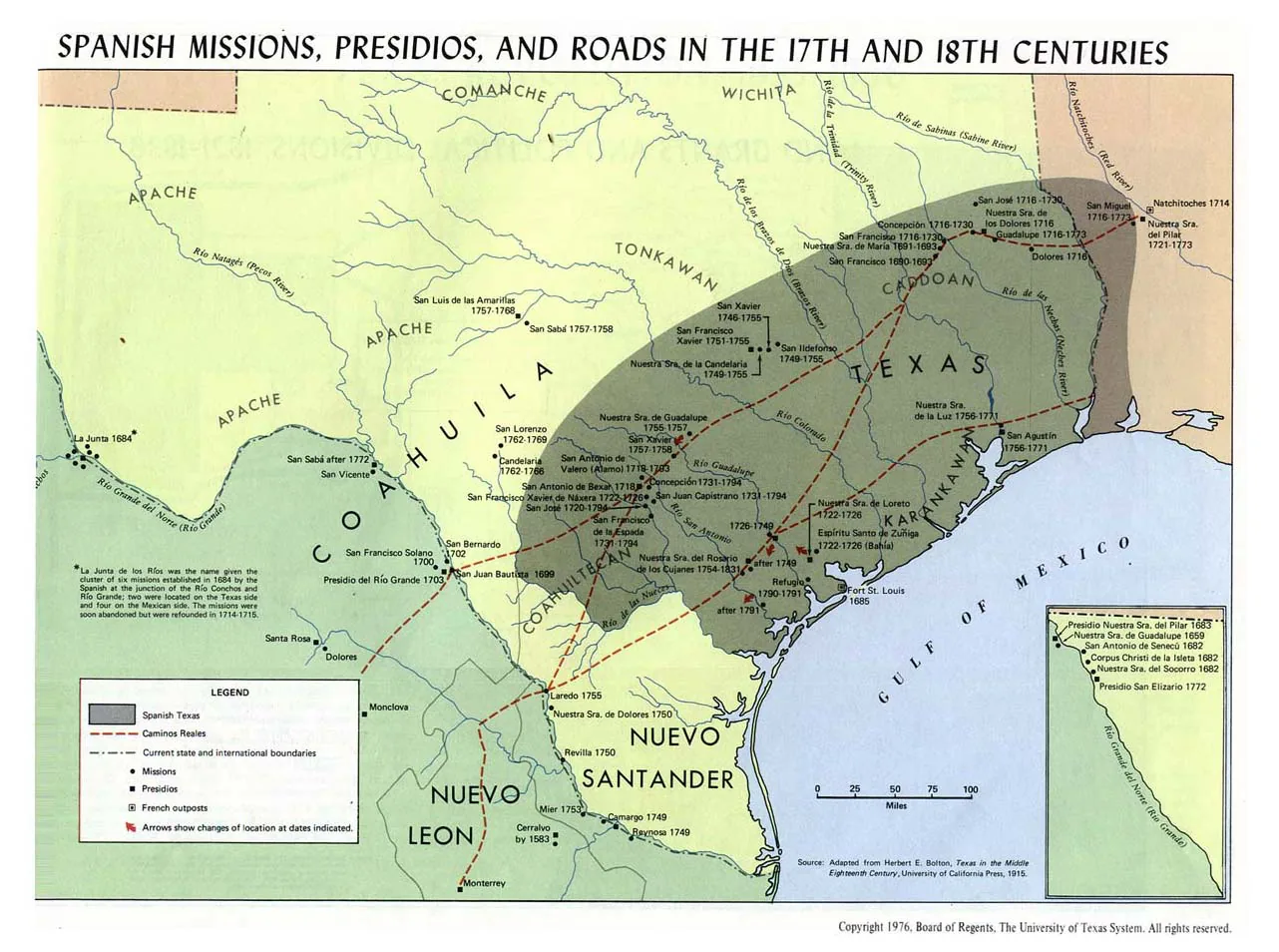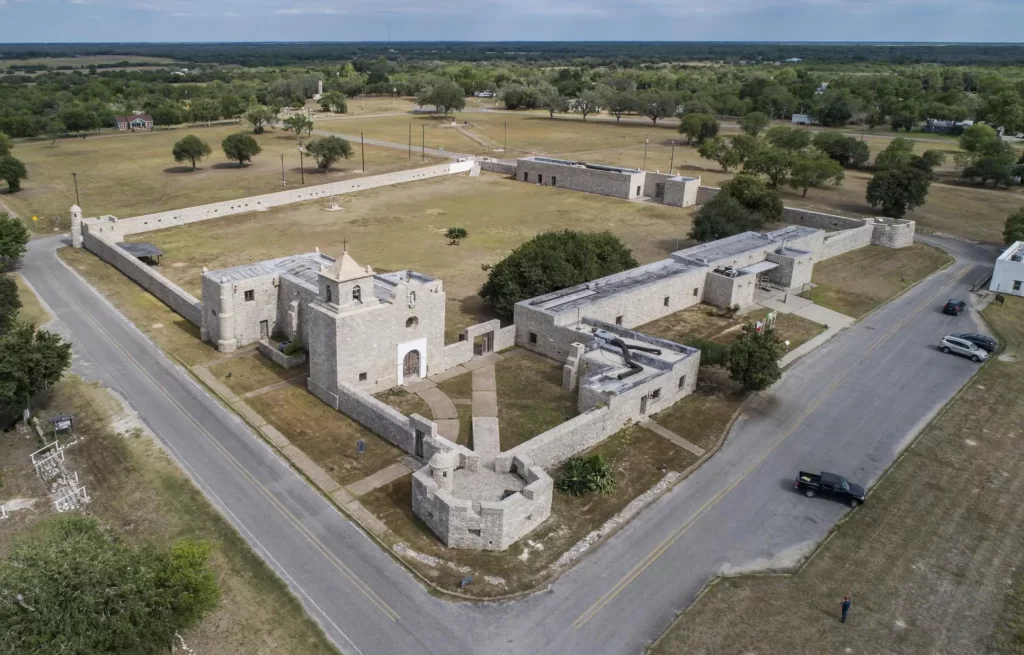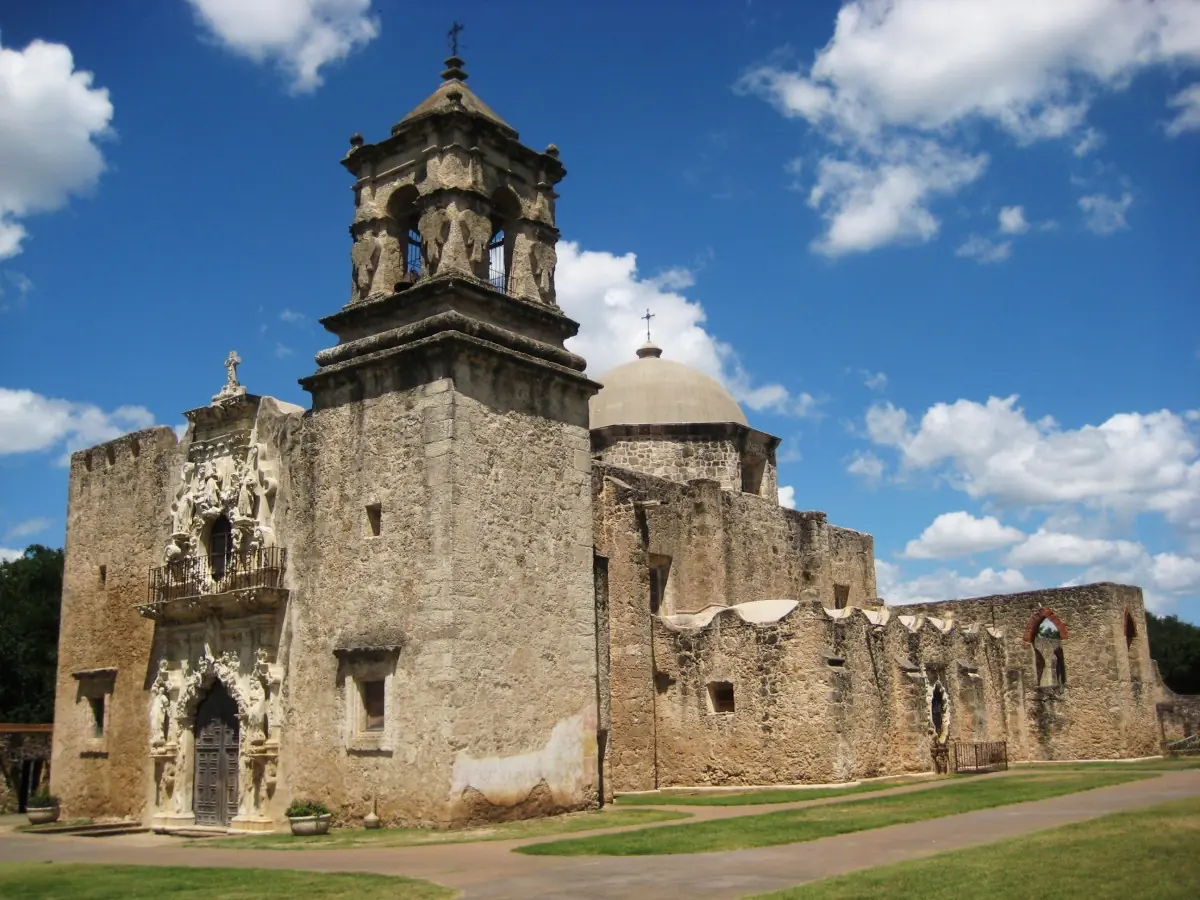During the Spanish colonial period, which lasted in Texas from the late 1600s to the early 1800s, the Spanish government built a system of missions, forts, and towns to help control the area and spread Spanish culture. These efforts were part of a larger plan to hold onto land and protect Spain’s northern frontier in North America.
One of the most important tools used by Spanish leaders was the mission. A mission was a church-centered community where Catholic priests tried to convert Native Americans to Christianity. The goal was not just religious—Spanish officials also wanted to teach native people Spanish customs, farming, and trades so they would become loyal subjects of Spain.

Spain first became interested in Texas after a French explorer, La Salle, built a small fort near the Gulf Coast in the 1680s. The Spanish saw this as a threat and responded by sending their own expeditions. They built early missions in East Texas, such as Mission San Francisco de los Tejas, near present-day Nacogdoches. These missions were often paired with presidios (forts) to provide protection.
To secure East Texas, for example, the Spanish established Los Adaes in 1721 in present-day Louisiana. It included both a presidio and a mission, and served as the capital of Spanish Texas for over fifty years. Los Adaes was a key outpost in Spain’s efforts to defend against French encroachment, blending military, religious, and civilian life in one location.
Later, the most successful mission communities were built near the San Antonio River. The Spanish founded Mission San Antonio de Padua in 1718, followed by Mission San José and others. These missions included stone churches, farms, workshops, and housing. Native Americans who lived there learned new skills and worked the land in exchange for food, shelter, and religious instruction.

However, life in the missions was not easy. Many Native Americans resisted or left. Others became sick from new diseases like smallpox. In some cases, missions were abandoned or moved due to conflict or bad conditions. Still, over time, a few missions grew into permanent communities. In 1731, a group of Spanish settlers from the Canary Islands founded San Fernando de Béxar, which became the civilian center of San Antonio.
The Spanish also built ranches and trade routes around the missions. These helped support the settlements and created new jobs. Spanish ranching traditions in Texas, such as cattle brands and horse culture, began during this time.
“Collectively, the missions of Spanish Texas are monuments to both idealistic and practical endeavors. As frontier institutions, they were intended to serve the dual aims of church and state. Their most obvious function was to save the souls of Indians, but they also assisted civilian settlements and [military] presidios in extending and holding the frontier.”1
Donald Chipman, Professor of History at the University of North Texas, 1965-2001
In the late 1700s, Spain’s leaders in Europe made changes to reduce the power of the church. Some missions were closed or taken over by civil authorities. This process was called secularization. Mission lands were divided up, and many buildings began to fall into disrepair.
Even after the mission period ended, the legacy of Spanish settlement remained strong. San Antonio, Goliad, and Nacogdoches all started as mission or presidio towns. Spanish language, Catholic religion, and ranching traditions became part of Texas culture.
The mission system was only partly successful. It did not convert most Native groups or create a strong population base. But it helped Spain claim the land and introduced key aspects of Spanish culture that are still visible in Texas today.
In 1821, Mexico won independence from Spain, and Texas became part of the new Mexican nation. Although Spanish rule ended, many of its policies, institutions, and settlements remained in place. This period laid the groundwork for the later conflicts and political changes that led to the Texas Revolution and the creation of the Republic of Texas.
- Donald E. Chipman, Spanish Texas: 1519–1821 (Austin: University of Texas Press, 1992), pg. 248. ↩︎
